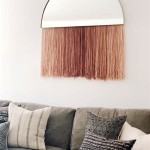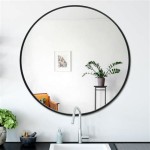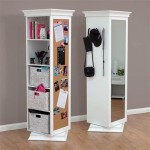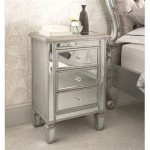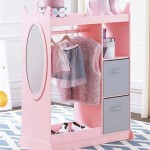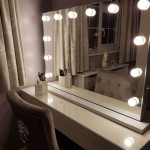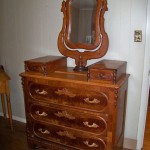How to Hang a Frameless Mirror with Plastic Clips
Frameless mirrors offer a sleek, modern aesthetic, but their installation can seem daunting without a traditional frame for support. Plastic mirror clips provide a secure and discreet solution, allowing the mirror's reflective surface to take center stage. This guide outlines the process of hanging a frameless mirror using plastic clips, ensuring a safe and aesthetically pleasing result.
Planning and Preparation
Proper planning and preparation are crucial for a successful installation. This involves understanding the mirror's weight and dimensions, choosing appropriate clips, and gathering the necessary tools.
- Measure the mirror's dimensions and weight. This information is vital for selecting the correct size and quantity of clips.
- Choose plastic mirror clips designed for the mirror's thickness and weight. Consult the clip manufacturer's guidelines for recommendations.
- Gather necessary tools, including a pencil, measuring tape, level, drill, appropriate drill bit (matching wall anchor type), wall anchors (if needed), screwdriver, and a safety hammer.
- Inspect the wall for any obstructions, such as electrical wiring or plumbing. A stud finder can be helpful in locating wall studs for added support, especially for heavier mirrors.
- Clean the wall surface where the mirror will be installed to ensure proper adhesion of the clips.
Positioning the Mirror
Accurate positioning ensures the mirror hangs straight and at the desired height. Precise measurements and the use of a level are essential in this stage.
- Determine the desired height for the mirror's center point. Mark this point on the wall with a pencil.
- Measure the distance from the top edge of the mirror to the hanging hardware or designated clip placement area. Transfer this measurement down from the center point marked on the wall. This new mark indicates the top edge of the mirror's position.
- Use a level to draw a horizontal line across the wall at the determined top edge mark. This line serves as a guide for aligning the clips.
Installing the Clips
Proper installation of the clips is essential for securely holding the mirror in place. Following the manufacturer's instructions for the specific clip type is crucial for optimal performance.
- Determine the number and spacing of the clips based on the manufacturer's recommendations and the mirror's size and weight. Generally, more clips provide greater stability, especially for larger or heavier mirrors.
- Mark the locations for the clips along the horizontal line, ensuring even spacing. Consider placing clips near the corners and at regular intervals along the sides for optimal support.
- Pre-drill holes at the marked locations using the appropriate drill bit size for the chosen wall anchors (if needed). Insert wall anchors if the wall material requires them for added strength.
- Attach the clips to the wall using screws, ensuring they are firmly secured. Verify that all clips are aligned along the horizontal line.
Mounting the Mirror
Carefully mounting the mirror onto the installed clips is the final step. Gentle handling and proper alignment are key to preventing damage.
- With assistance if the mirror is large or heavy, carefully lift the mirror and align its bottom edge with the bottom lip of the installed clips.
- Gently push the mirror back against the wall, ensuring the top edge is flush against the wall and the mirror is fully seated within the clips. Listen for a clicking sound, which usually indicates proper engagement of the clips.
- Once the mirror is securely in place, visually inspect the alignment and stability. Gently press on various points of the mirror surface to confirm it is firmly held by the clips.
Additional Tips and Considerations
Several additional factors can contribute to a successful installation and enhance the long-term security and appearance of the mirror.
- For very heavy mirrors, consider using adhesive in addition to clips for added support. Apply a thin bead of mirror adhesive to the back of the mirror before mounting it onto the clips.
- Use safety backing film on the back of the mirror. This film helps prevent shattering in case of accidental breakage.
- If installing the mirror in a high-humidity area, such as a bathroom, choose clips and screws made of corrosion-resistant materials, such as stainless steel.
- For extremely large or heavy mirrors, seek professional assistance for installation to ensure safety and proper mounting.
Troubleshooting
Occasionally, minor adjustments might be needed after installation. Addressing these issues promptly ensures the mirror remains secure and visually appealing.
- If the mirror appears slightly tilted, loosen the screws of the affected clips and make small adjustments until the mirror is level. Retighten the screws firmly.
- If the mirror feels unstable, consider adding more clips for increased support. Follow the same installation procedure for the additional clips.
- If any clips become damaged, replace them immediately to maintain the security of the mirror.

How To Hang A Mirror With Clips

How To Frame A Mirror With Clips In 5 Easy Steps

How To Frame A Bathroom Mirror Over Plastic Clips Somewhat Simple

Diy Bathroom Mirror Frame Without Removing Clips Her Happy Home

How To Hang A Frameless Mirror On The Wall With Pictures

How To Hang A Frameless Mirror On The Wall With Pictures

How To Install A Mirror Without Frame Merrypad

How To Install A Mirror Without Frame Merrypad

How To Hang A Frameless Mirror On The Wall With Pictures

How To Frame A Bathroom Mirror Over Plastic Clips Somewhat Simple

